It can be said that every culture has used shells, whole or in part, and pearls as personal adornment. Some cultures even wore shells as part of their elaborate costume to signal their distinct tribal identities and to display their role and rank within the tribe. In some parts of India, a Hindu woman's equivalent of a wedding ring is a bracelet made of the sections of the Indian (or Sacred) Chank shell.
|
|
Picture
courtesy of Helen Dennet
Here is a picture of a man from the southern highlands of Papua New Guinea wearing a baler chest ornament. Different cultural groups have evolved different ways of decorating themselves with shells and one can often guess which tribe a person comes from by the shells being worn. 1984 To see more photos of New Guineans wearing tribal costumes, click HERE |
Some of the other ways shells have been used as adornment are:
|
 |
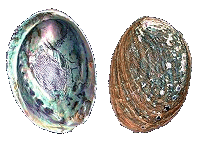 |
|
|
|
-
Shell or mother of pearl (iridescent shell interior of many species of bivalves) were commonly used on ceremonial or religious garbs, as decoration, or intrinsic parts of their function.
-
as clothing adornment, pearls are frequently sewn on as jewellery, fresh and salt-water pearls are used in many ways as inserts in ceremonial masks.
-
Some GREAT new pictures
-
Denatlium Purse. These photos show a carved elk antler purse which was used by the people of Hoopa Indians in California to carry their Dentalia shell money. It was made and used by men.
Two examples of man using the by-products of molluscs for decoration or fancy clothing are:
|
Two
examples of man using the byproducts of molluscs for decoration
or fancy clothing are:
|
|
| 1. as fine gloves, caps stockings and collars. These were once made from the "golden fleece" or byssus threads of Pen shells (Pinnidae). |
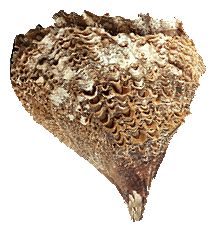 Pinna ragosa |
2. as Dyes.
Dyes made from molluscs were used to beautify clothing
and other items made from cloth. Depending on the species of mollusc used,
the final product varied from red to violet to almost black. As early
as the fifteenth century B.C., the people of Tyre and Sidon had found
a way to extract the purple dye from some molluscs. The same royal purple
colour worn by kings, emperors and high priests in the past is still used
in the robes and alter mantles of some religions today. (Note: The color
the ancients called "purple" (Royal or otherwise), was in fact
closer to a dark burgundy or maroon, and various shades of blue were also
included under the general moniker (i.e., name) of "Purple".
In the northern Mediterranean, the dye makers found they could change
the color produced by peeing into the vat! (The priests and nobles who
wore the finished product probably never even knew!!)
- An example of
this is The Association for the Promotion and Distribution Of Tekhelet
(Biblical Blue) in Jerusalem, Israel. This society still uses and makes
the Biblical blue to produce the Jewish ritual fringes on their prayer
shawls. In the Old Testament, this blue was so rare and highly valued
that it could be collected only once every seventy years and was used
to dye just one thread at each corner of the prayer shawl.
- Even though
artificially produced dyes are available at a fraction of the cost,
many Mexican and South American natives still prefer the molluscan dyes
for their garbs, since they produce more natural - looking and
traditional hues In Oaxaca, the Mixtec still search the seashore
for the pretty Wide-mouthed Purpura shell, squeeze some of their
juices onto yarns and return the shell to its home, to be used
again the following season. These same dyes were used as early as 400
B.C.
Some molluscs that have been used to dye material are
|
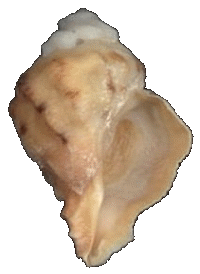 Murex miliaris |
||
|
|||
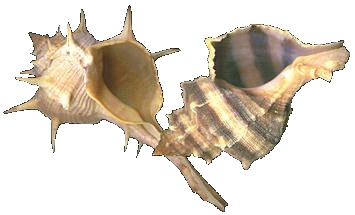
Murex brandaris and Murex trunculus |
|||
|
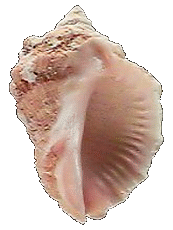 Thais haemastoma |
||
|
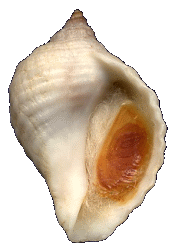 Nucella lapillus |
||
|
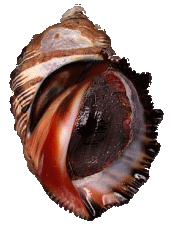 Purpura patula pansa |
||
|
** Note: All of the above species belong to the Murex Family, and all produce a bluish-reddish-purplish type of dye.
|
|||
|
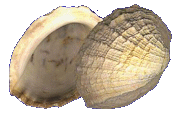 Concholepas concholepas |
||